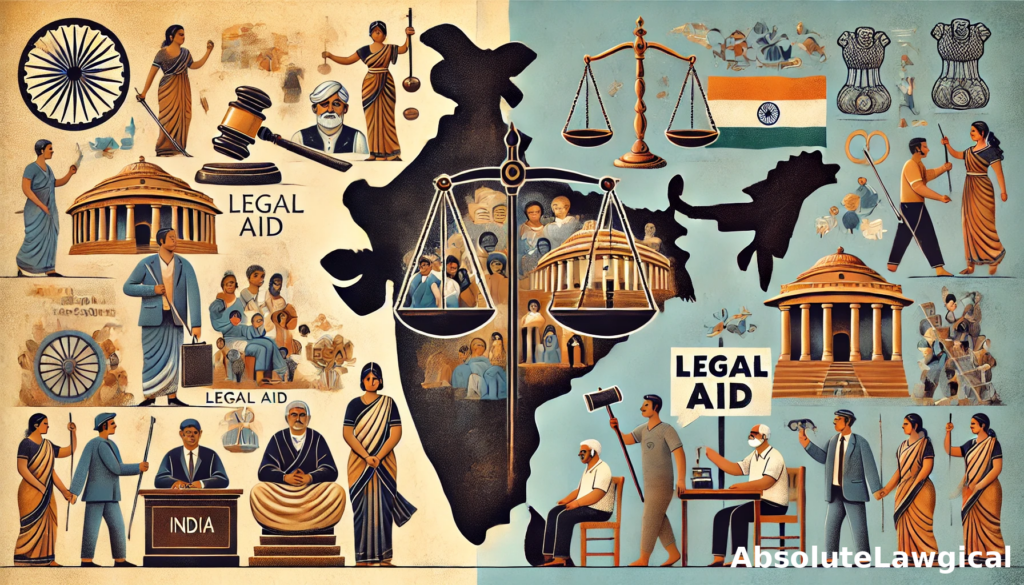
The foundation of a just and indifferent society lies in icing that all individualities, irrespective of their socio- profitable status, have access to justice. In India, the conception of free legal aid has evolved significantly over the times, elevated as a indigenous accreditation and enforced through legislative and institutional fabrics. still, while progress has been made, the trip toward accessible and quality legal aid remains deficient.
The literal trip of Legal Aid in India
The conception of legal aid gained traction in India during the 1970s. The 1973 Report on legal aid eligibility, following recommendations from the 1971 Gujarat Report, was the first to address the addition of free or subsidized legal services in felonious proceedings. It rejected the supremacy test and supported for universal access to legal aid during police interrogation and the early stages of judicial proceedings. still, exceptions were made for habitual malefactors and cases involving private controversies similar as infidelity and vilification.
In 1976, the Juridicare Committee, led by Justice P. N. Bhagwati and Justice Krishna Iyer, proposed a comprehensive legal services program, reprised in their 1977 report, National Juridicare Equal Justice — Social Justice. The commission recommended a decentralized system of legal aid institutions across colorful executive situations, emphasizing pro bono services, legal mindfulness juggernauts, and conventions in universities.
The same time saw the addition of Composition 39A in the Constitution through the 42nd Amendment, making free legal aid a directive principle of state policy. This provision underlined the state’s responsibility to insure justice is n’t impeded by profitable or other walls.
Institutionalizing Legal Aid NALSA and Beyond
The establishment of the Committee for Implementing Legal Aid Schemes( CILAS) in 1980 and the posterior enactment of the Legal Services Authorities Act, 1987, pronounced significant mileposts in India’s legal aid frame. The Act crowned in the creation of the National Legal Services Authority( NALSA) in 1995.
Under NALSA, a network of 37 state legal services authorities, 673 quarter legal services authorities, and 2,351 taluka legal services authorities ensures free legal aid. NALSA promotes legal knowledge and holds Lok Adalats for disagreement resolution, targeting marginalized groups like women, children, pastoral populations, and persons with disabilities.
Still, despite its expansive reach, the effectiveness of NALSA’s legal aid conventions and services has been blamed for crummy quality and limited involvement of law seminaries and scholars in furnishing legal aid.
Legal fabrics Supporting Free Legal Aid
The Indian legal system integrates free legal aid within its broader indigenous and statutory fabrics.
• indigenous vittles
o Composition 21 guarantees the right to life and particular liberty, interpreted by the Supreme Court to include free legal aid for penurious individualities.
o Composition 39A directs the state to insure equal justice and free legal aid, buttressing the right to pierce justice as abecedarian to life and liberty.
o Composition 14 emphasizes equivalency before the law, calling the provision of legal representation to those unfit to go it.
• Legal Services Authorities Act, 1987
The Act institutionalizes legal aid through a structured scale of legal services authorities. It authorizations the provision of legal services at all stages of felonious proceedings and for specific orders of vulnerable individualities.
Landmark Judgments on Legal Aid
Several Supreme Court judgments have corroborated the significance of free legal aid
1. Hussainara Khatoon v. State of Bihar( 1979)
pressing the plight of undertrial captures in Bihar, the Court honored free legal aid and a speedy trial as integral to Composition 21.
2. M.H. Hoskot v. State of Maharashtra( 1978)
The Court ruled that free legal aid must extend to captures to insure their right to appeal under Composition 21.
3. Suk Das v. Union Territory of Arunachal Pradesh( 1986)
The Court held that trials without informing the indicted of their right to free legal aid violated Composition 21, vacating similar proceedings.
4. State of Maharashtra v. Manubhai Pragaji Vashi( 1995)
The judgment emphasized the state’s responsibility to establish legal aid centers, feting the part of legal education in perfecting access to justice.
Challenges to Accessing Legal Aid
Challenges to Accessing Legal Aid
Despite the robust legal frame, significant walls persist in icing quality legal aid in India. Inferior Quality of Legal Aid Services, numerous legal aid providers warrant the experience and fidelity necessary to defend penurious guests effectively.
2. Limited Involvement of Law seminaries
While the 2011 Legal Aid Conventions Regulations and the 2013 Legal Services Clinics Scheme emphasize pupil participation, utmost law seminaries do n’t laboriously engage in furnishing legal aid.
3. Institutional and Financial Constraints
A deficit of finances, inadequate institutional capacity, and restrictive eligibility criteria limit the reach of legal aid services.
4. Social and Economic walls
Poverty, ignorance, and lack of mindfulness about legal rights further hamper access to justice for marginalized populations.
The Way Forward Strengthening Legal Aid
To uphold the rule of law and indigenous principles of justice, India must address the being gaps in its legal aid system. crucial recommendations include
• Enhancing Legal Aid Quality
Involving elderly attorneys in mentoring and guiding legal aid cases can ameliorate the standard of representation.
• Incorporating Clinical Legal Education
Law seminaries should integrate legal aid programs into their classes, encouraging scholars to share in legal aid conventions and pro bono work.
• adding mindfulness and Availability
Legal knowledge juggernauts targeting pastoral and marginalized communities can empower individualities to seek justice.
• Strengthening Institutional Support
Allocating acceptable coffers and streamlining the functioning of legal aid authorities can enhance their effectiveness.
Conclusion
Legal aid in India has come a long way since the 1970s, evolving from a abstract frame to an institutionalized system. still, the trip toward indifferent access to justice is far from over. Addressing the challenges of quality, outreach, and mindfulness is pivotal for erecting a robust legal aid frame that truly serves the requirements of the poor and marginalized.
By bridging these gaps, India can fulfill its indigenous pledge of justice for all, icing that no existent is denied their rights due to fiscal or social constraints. Only also can the ideals of equivalency, liberty, and justice elevated in the Constitution come a reality for every citizen.
WRITTEN BY: THEJAS VUDDARI
